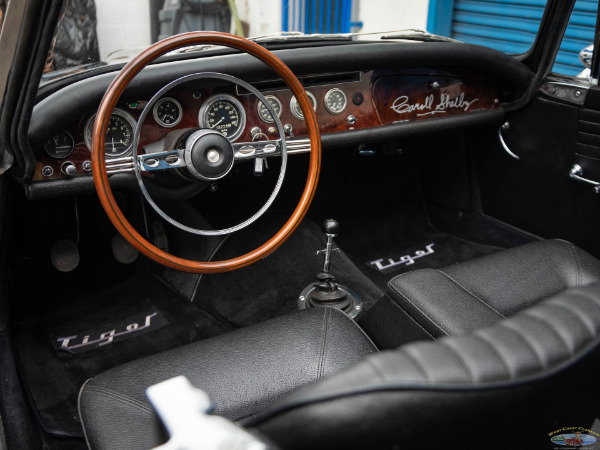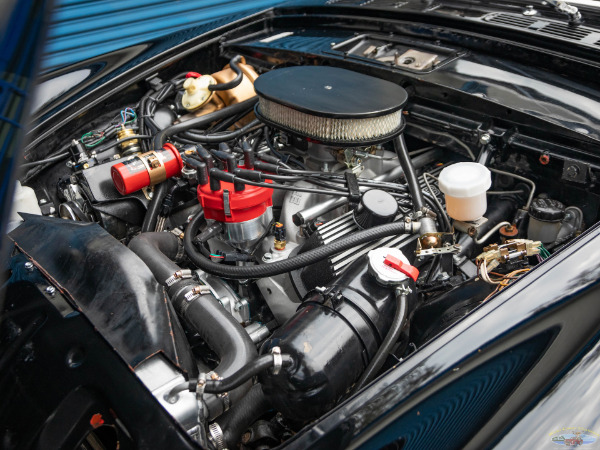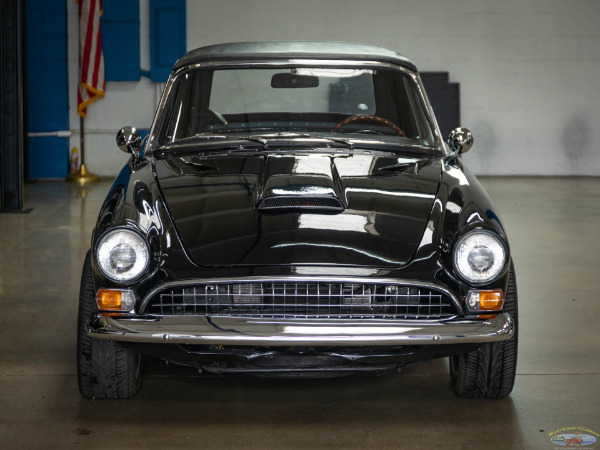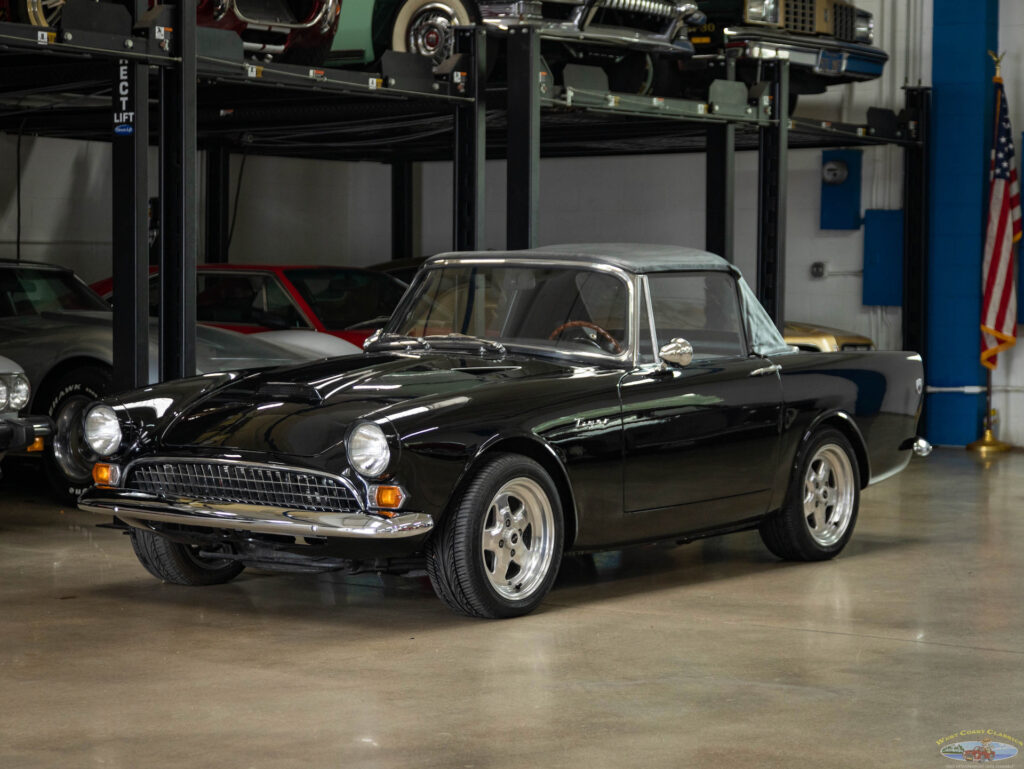Introduction to the 1967 Sunbeam Tiger Mark II
Initially, the Sunbeam Tiger was introduced in 1964 as a high-performance version of the Sunbeam Alpine roadster. By 1967, the Mark II variant emerged, representing the peak of the Tiger’s development. Specifically, the 1967 Sunbeam Tiger Mark II featured significant upgrades in both performance and design. Additionally, this model year marked the end of production for the Tiger, making it a highly coveted classic. Consequently, the 1967 Tiger Mark II holds a special place in automotive history.
Evolution of Sunbeam Leading to the Tiger
Sunbeam, a British marque founded in the early 1900s, initially gained fame for its luxury cars and success in motorsport. Over the decades, Sunbeam evolved, adapting to changes in the automotive industry. By the 1960s, Sunbeam, under the Rootes Group, sought to enter the American sports car market. Consequently, the company looked to Carroll Shelby, who had successfully transformed the AC Cobra with Ford V8 engines. Importantly, Shelby’s influence led to the creation of the Sunbeam Tiger, a car that combined British design with American power.
Visionary Design and Influential Designers
The design of the Sunbeam Tiger was a collaborative effort. Initially, the Rootes Group sought to enhance the performance of the Sunbeam Alpine by incorporating a more powerful engine. Carroll Shelby, known for his work on the AC Cobra, was consulted to help with this transformation. Shelby’s team, including engineer Ken Miles, played a crucial role in modifying the Alpine to accommodate a Ford V8 engine. Additionally, the design retained the classic British roadster aesthetics while integrating American muscle car elements.
The exterior design of the Tiger Mark II remained largely faithful to the original Alpine’s lines. Notably, it featured minor updates such as a revised grille and headlamp bezels. The interior, however, saw significant enhancements. The dashboard was redesigned to include a new set of Smiths gauges, providing better readability and a more modern look. Furthermore, the Mark II introduced new seats and door panels, improving comfort and style. These updates combined to create a car that was both visually appealing and performance-focused.
Unleashing Power: Engine and Performance
Under the hood, the 1967 Sunbeam Tiger Mark II was equipped with a Ford 289 cubic inch V8 engine, producing 200 horsepower. This engine upgrade from the earlier 260 cubic inch V8 significantly boosted the car’s performance. Importantly, the 289 V8 was mated to a four-speed manual transmission, providing a robust and engaging driving experience. Additionally, the Tiger Mark II featured a limited-slip differential, enhancing traction and handling.
The performance of the Tiger Mark II was impressive for its time. The car could accelerate from 0 to 60 mph in just over seven seconds. Furthermore, it had a top speed of around 125 mph. These figures made the Tiger Mark II one of the fastest roadsters of the 1960s. Additionally, the car’s lightweight design and powerful engine combination ensured it was not only quick in a straight line but also agile around corners. The suspension system, featuring independent front suspension and a live rear axle, provided a balanced ride and responsive handling.
OUR 1967 Sunbeam Tiger Mark II
Luxury and Innovation: Interior and Technology
Inside, the 1967 Sunbeam Tiger Mark II combined luxury with functionality. The interior featured high-quality materials, including leather seats and wood veneer trim. Specifically, the dashboard was equipped with a comprehensive set of Smiths gauges, offering vital information such as speed, fuel level, and oil pressure. Additionally, the car included features such as a heater and defroster, ensuring comfort in various weather conditions.
Technologically, the Tiger Mark II was advanced for its time. It featured a modern electrical system with improved reliability. Moreover, the car included an updated ventilation system, enhancing driver and passenger comfort. The attention to detail in the interior design extended to the ergonomics, with controls and switches logically placed for ease of use. These interior elements combined to create a driving experience that was both luxurious and practical.
Limited Production and Market Impact
Sunbeam produced the 1967 Tiger Mark II in limited numbers, adding to its exclusivity. Initially, the car was marketed as a high-performance sports car, appealing to enthusiasts who valued power and style. The Tiger’s impressive design and reliable performance quickly garnered attention, making it a standout in the competitive sports car market of the 1960s. Additionally, the introduction of new features and design elements highlighted Sunbeam’s commitment to innovation and quality.
The market impact of the Tiger Mark II was significant. It reinforced Sunbeam’s reputation for producing high-quality, high-performance vehicles. Moreover, the success of the Tiger helped establish Sunbeam as a notable player in the sports car segment. The 1967 Tiger Mark II, in particular, became a symbol of British engineering excellence, admired for its blend of power, sophistication, and cutting-edge technology. Today, the 1967 Sunbeam Tiger Mark II remains a highly coveted collector’s item, cherished by enthusiasts and automotive historians alike.
Enduring Legacy and Influence
Finally, the legacy of the 1967 Sunbeam Tiger Mark II extends far beyond its production years. The car’s design and engineering innovations have left a lasting impact on the automotive industry. Not only did it set new standards for performance and luxury, but it also influenced the design of future vehicles. The Tiger’s combination of power, style, and technology continues to inspire modern car manufacturers.
The enduring popularity of the 1967 Tiger Mark II underscores its significance in automotive history. Collectors and restorers strive to preserve these vehicles, maintaining their original features and performance capabilities. This dedication ensures that the Tiger’s legacy will continue for generations to come. Ultimately, the 1967 Sunbeam Tiger Mark II represents a pinnacle of automotive design and engineering, a testament to Sunbeam’s commitment to excellence.
OUR OTHER INVENTORY
Thrilling Achievements: Unrivaled Racing History
The 1967 Sunbeam Tiger Mark II also made a notable impact in the world of motorsport. Initially, Sunbeam aimed to showcase the car’s performance capabilities through competitive racing. The Tiger had already established a strong reputation on the track, and the Mark II continued this tradition. In particular, the Tiger competed in various racing events, where its power and reliability were put to the test.
One of the most significant achievements of the Tiger Mark II was its performance in the SCCA (Sports Car Club of America) racing events. Drivers like Dan Gurney and Jerry Titus drove the Tiger to numerous victories, demonstrating the car’s exceptional engineering. Additionally, the Tiger’s success in racing helped to elevate Sunbeam’s brand image, emphasizing its commitment to performance and innovation.
Furthermore, the Tiger Mark II’s racing pedigree extended to other events, including hill climbs and endurance races. The car’s robust engine and advanced suspension system made it a formidable competitor in various racing disciplines. The Tiger’s performance on the track demonstrated its versatility, proving that it could excel both as a luxury cruiser and a high-performance racer. This dual capability made the Tiger a favorite among racing enthusiasts and car collectors alike.
Conclusion: The Lasting Impact of the 1967 Sunbeam Tiger Mark II
In conclusion, the 1967 Sunbeam Tiger Mark II is a remarkable vehicle that embodies the spirit of innovation and excellence that defined Sunbeam during the mid-20th century. Its powerful Ford 289 V8 engine, luxurious interior, and advanced technology made it a standout in the automotive landscape of the 1960s. The car’s design, led by a collaboration between the Rootes Group and Carroll Shelby, showcased a perfect blend of style and functionality, setting new standards for both performance and luxury.
The 1967 Tiger Mark II’s impact on the automotive industry was profound, influencing the design and engineering of future vehicles. Its success in racing further cemented its legacy, demonstrating Sunbeam’s commitment to building cars that excelled in both form and function. Today, the 1967 Sunbeam Tiger Mark II remains a highly prized collector’s item, cherished for its historical significance and timeless appeal. This car is not just a testament to Sunbeam’s storied past but also a symbol of the enduring allure of British automotive craftsmanship.

